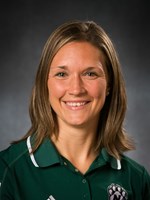
On the field, head injuries scare Kelly Quinlin the most. As head athletic trainer at Northwest Missouri State University, Quinlin sees all kinds of damage, but hits to the head concern her because they can change lives quickly and often unsuspectingly.
“We’re talking about, basically, the injuries happening at the cellular level,” she said.
With concussions, athletes may suffer mental as well as physical trauma.
An article in The Washington Post last December highlighted the case for a link between depression and concussions, citing multiple situations where young athletes have suffered radical shifts in mood after sustaining concussions on the field.
In December, Hollywood will present its take on public discussion about sports injuries in the National Football League in the film, Concussion, starring Will Smith. The film focuses on the discovery of Chronic Traumatic Encephalopathy, which does not occur in all concussions but can develop after repeated head trauma.
Symptoms of CTE include memory loss, aggression and depression. Currently, physicians can only diagnose CTE post-mortem, which leaves treatment decisions to watching symptoms also shared with Alzheimer’s disease and Amyotrophic lateral sclerosis, commonly known as Lou Gehrig’s disease.
Research done as early as 2007 indicates that American football players sustain the highest number of concussions, although female athletes claim the highest rate of concussions in one sports season. No one knows precisely how to decrease the incidence of concussion, but athletes get them regardless of wearing headgear.
“People assume a helmet is going to offset the blow,” Quinlin said. “But ultimately, if you play a high-impact collision sport, there’s a risk.”
Since professionals have learned more about concussions and implemented new rehabilitation procedures, fewer Northwest Bearcat athletes have had to quit their sports, Quinlin said.
After a preliminary assessment, Erin York, lead athletic trainer at SSM Health Medical Group, uses a computerized neurocognitive test called ImPACT to measure reaction time, attention span and problem solving, among other basic functions. Results from computerized testing factor into making decisions about clearing athletes to return to play.
Across sports medicine, doctors and trainers agree that all concussions are different.
In a CBS News July article, neurologist James Noble said, “It really confounds the whole matter of trying to identify concussion in an objective, highly accurate way.”
Quinlin and York echoed that statement.
Quinlin said that at one time, concussions were graded in severity and assigned a corresponding protocol, but recent research encourages physicians and trainers to view each injury as unique. Symptoms like dizziness and fatigue could overlap, but patients have their own predispositions and medical history to consider, she explained.
Average recovery time differs among athletes due to the singularity of each injury, however. Quinlin said she typically sees a seven-day recovery period unless the athlete has a history of migraines.
Head injuries require brain rest to heal, so when student athletes report that they can’t return to class after a concussion, “it’s legit,” Quinlin said. Attending lectures soon after an injury can also prolong full recovery.
According to Quinlin, the only way athletes can avoid concussion, aside from staying off the field, requires training in proper techniques.
For example, strengthening exercises and reaction activities can prevent concussions once impact occurs, she said.
“Good technique and following the rules is the best prevention,” York said. “No piece of equipment is going to prevent a concussion.
“Always remember this is just a game you are trying to return to, but it could affect the rest of your life if you return too soon,” he said.
If left untreated, or undertreated, injured athletes can further damage, unnecessarily shortening their careers and potentially altering lifelong health.
“You can also suffer from Second Impact Syndrome, where you sustain another concussion before the first is healed,” York said. “These second concussions can cause devastating effects such as brain damage, chronic headaches, learning difficulties and even death.”
For more information about preventing and treating concussions in sports injuries, visit the CDC Return to Play policy handbook and the NCAA concussion guidelines.
ORIGINAL ARTICLE:
http://www.maryvilledailyforum.com/news/article_8854b640-62f6-11e5-b068-c3b8e51e84c5.html